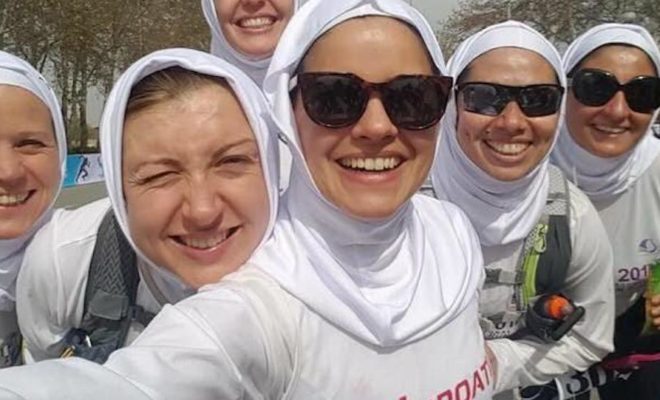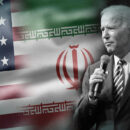Women Barred From Tehran Marathon

Tehran’s first international marathon will be remembered as a sex-segregated event with little sign of the Americans who had registered to attend.
“I felt humiliated when I heard the organizers had changed the route for women and separated them from men,” said a female runner, who asked not to be identified, in an interview with the Center for Human Rights in Iran.
Of the 156 women who had registered for the event on April 7, 2017, 50 were foreigners. Two days before the event, the authorities decided not to allow women to run alongside the men on the main 42-km route.
“I wanted to run in the streets of the city I loved with all the runners. We started from Hassanabad Boulevard,” she added. “Some male marathon runners also decided to ignore the official route and run and accompany us.”
Female runners who were forced to comply with Iran’s Islamic hijab law—the head-to-toe dress code that all women in Iran are legally required to observe—were relegated to a 10km route around the lake at Azadi Sports Complex west of Tehran.
“When we reached Azadi Square, one of the girls joined the official route and began running with the men,” said the female runner. “I cherished that moment. When I reached home, I was in love more than ever with the lanes and alleyways of my city.”
Some Iranian women protested by choosing their own route to run.
“Women decided to run their own marathon from Hassanabad Sq. to Azadi Sq. We should not wait. Women have a right to our city,” tweeted journalist and social activist Ameneh Shirafkan on April 7 with a photo of male and female marathon runners at Hassanabad Sq.
“Two or three foreign women were very angry from the start,” she added. “One of them was saying that she wasn’t even sent an email to say women had to run separately. A lady from (Iran’s Track and Field) Federation told her to be quiet.”
“Women wanted to show that the streets of Tehran are a better place to run than in the wastelands on the outskirts of the capital,” reported Ethtesad (Economy) News.
Shirafkan also posted a photo of 71-year-old “Ms. Aghili,” the oldest participant in the event.
Women who ran the official 10km route around Azadi Lake covered their heads with headscarves and wore long shirts provided by the organizers. Professional photographers were prohibited from taking pictures of them.
“We have limitations regarding the women’s marathon. It’s no joke to run 42 kilometers. We cannot tell the foreign runners to run that distance in a dress and headscarf,” Hamid Sa’adat, a spokesman for Iran’s Track and Field Federation, told the Vaghaye Ettefaghiyeh newspaper on April 5.
“We are organizing this event in an Islamic country and we have to control every detail. We cannot hold this event within Islamic codes for women,” he added.
Speaking at the opening of the race, Sports Minister Masoud Soltanifar said some 700 runners participated, including about 200 from 40 other countries.
“Personally I do not agree with that and we are trying to find other ways to make steps (forward) for female running in Iran,” the founder of the race, Dutch citizen Sebastiaan Straten, told the Associated Press (AP) on April 6.
The AP was unable to locate any of the 28 Americans listed on the marathon’s website, but there was at least one Iranian-American in attendance.
“I’m very, very excited. This has been a dream for me,” Amir Arasta, from Washington, DC, told the AP. “I always thought this would be the best route, from Azadi Sports Complex to Azadi Square. When I heard it would be happening, I was very happy.”
American marathon enthusiast Charlie Barkowski said he was looking forward to completing his 52nd marathon, but his visa had never arrived.
Officials claimed the visas were not issued in time.
“A permit was issued for all the foreigners who registered, but the process of issuing visas takes a little longer and that’s why some athletes were not able to be present for the event,” said the head of Iran’s Track and Field Federation, Majid Keyhani, on April 7.
Source: Center for Human Rights








